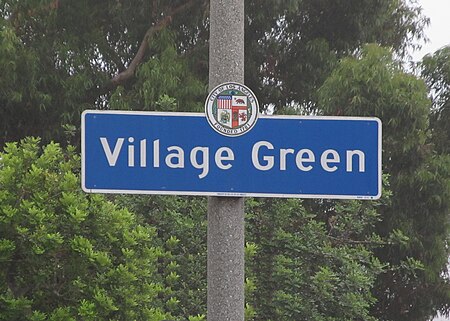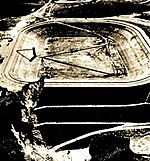Village Green, Los Angeles
1942 establishments in CaliforniaApartment buildings in Los AngelesBaldwin Hills, Los AngelesCrenshaw, Los AngelesHistoric districts in Los Angeles ... and 11 more
Historic districts on the National Register of Historic Places in CaliforniaLos Angeles Historic-Cultural MonumentsModernist architecture in CaliforniaNRHP infobox with nocatNational Historic Landmarks in CaliforniaNational Register of Historic Places in Los AngelesNeighborhoods in Los AngelesPlanned residential developmentsResidential buildings completed in 1942Residential condominiums in the United StatesUse mdy dates from August 2023

Village Green, originally named Baldwin Hills Village, is a neighborhood at the foot of Baldwin Hills, within the city of Los Angeles, California. Village Green consists of a large condominium complex that is both a Los Angeles Historic-Cultural Monument and a National Historic Landmark. Designed in the late 1930s and completed by 1942, it is one of the oldest planned communities of its type in the nation. Village Green was named by The American Institute of Architects as one of the 100 most important architectural achievements in U.S. history.
Excerpt from the Wikipedia article Village Green, Los Angeles (License: CC BY-SA 3.0, Authors, Images).Village Green, Los Angeles
Court 5, Los Angeles West Adams
Geographical coordinates (GPS) Address Nearby Places Show on map
Geographical coordinates (GPS)
| Latitude | Longitude |
|---|---|
| N 34.019722222222 ° | E -118.36083333333 ° |
Address
Court 5
Court 5
90016 Los Angeles, West Adams
California, United States
Open on Google Maps










